so knowing,
what is known?
Lucille Clifton, “far memory”
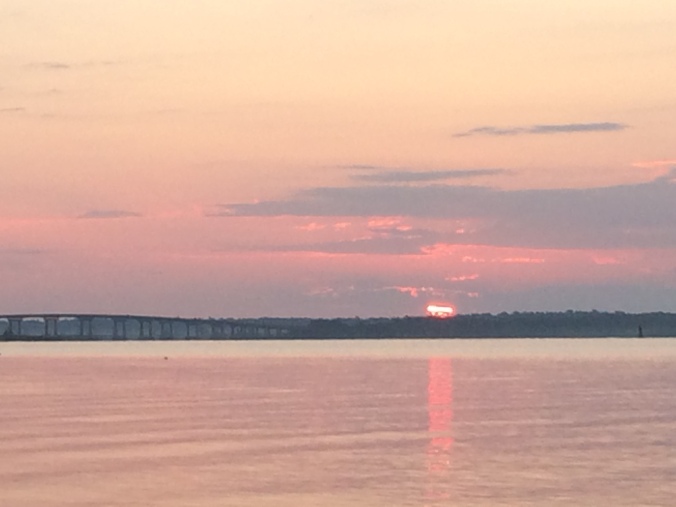
L.H. Siau Bridge, July 16, 6:23 AM.
When I get out of the shower in the morning, I pull on my clothes and pour coffee. If there is a mess in the kitchen, I clean. From the living room sofa I bear witness to the waking routines of nine others, and more: the chronic gym-rats; a runner; coffee fiends out for a score; teachers and social workers, a lawyer and a librarian, moving about with oatmeal in various stages of dress. A congregation masses around Norman’s blue car in the next yard. Wayne wakes up running. Wayne is leashed, walked, and fed. Wayne runs back to bed.
Norman’s talking with David and Lester. All three are Georgetown natives who, for various reasons, left for New York and who, for various reasons, returned. Few of the people I met at Public Works before dragging up live in town, and fewer are natives. “Do you ever get used to the smell?” I once asked a coworker from Pawleys Island. She chuckled the way bureaucrats do: not because I what I had asked was funny, but because she doesn’t have as many APWA forms finished as she should and her twins are both sick with colds and she meant to be a painter anyway and what else could she do but chuckle? It was Wednesday.
Pawleys, it should be noted, is two bridges and a stretch of US-17 away from the reach of International Paper’s sulfurous steam. (Incidentally, both halves of L.H. Siau were under my jurisdiction for about a week as I was revising the county’s bridge policies: Hand it over to Columbia…to Columbia…to Columbia…) Maybe it’s more than a combined century of living mere blocks from the mill that brings our three neighbors outside at seven every morning; maybe the dew at this hour dampens the stench. They stand and talk, in Georgetown’s lingering morning breath, about the army, Revelation, and gardening.
Another remembrance from the three weeks I spent infiltrating county bureaucracy: a different coworker, also from Pawleys, asks pointedly, “They’ve got you living there?” (On my third day of work, a foreman showed me the layout of the county on a wall-sized map. Among the insets were all the cities on the Grand Strand, including Georgetown: cartographic proof that the county does indeed recognize its own seat.) As it turns out, she used to go jogging around the West End until friends of hers mentioned that the area has a poor reputation. “Poor” meaning, presumably, the condemned houses scattered about the end of Front Street and the skinny dogs drooping over the tracks like laundry on a line. And the parents, living on the junction of “Racing in the Street” and Monk crazed and alone at the piano, they sit on rockers and watch their kids play pickup. When the sun drops behind the mill, the floodlights turn on; every night a parody of the Eiffel Tower, twisted and on fire. Is the smell week-old lasagna, or is it sweaty socks at the bottom of the closet? Even now I can’t decide. Some evenings it’s sulfur beyond metaphor.
I stop by the auto parts store on one of those evenings. I’m coming home from the gym and figure that my car could use an air freshener. There’s only one other customer in the place, and he’s ahead of me in line. The cashier, who looks like I used to, working in the summer in high school, deserves to be licked with a wrench until he figures out how the cashback system works. At least that’s what the man in front of me tells him.
“Where’s Steve?”
“He’s got a battery – ”
“Go get him.”
The man turns around, jerks a thumb toward the moving cashier, and begins a long invective. Every expletive releases more tobacco. The oil stains on his shirt match his moustache, and although he’s got lines in his face, the skin on his fingers is stretched taut. Even in his rage he seems skeletal and small.
This is not the first time I’ve seen someone yell at a cashier in Georgetown. Another bony man walks with me into a BP station before work one morning; he’s got a British accent, a backpack, and a Jumanji beard. The store seems to have every flavor of Marlboros except for the one he wants. He raises his voice, slurring his words, and goes back to his bike. I don’t know him, or where he came from or where he rode off to; nor do I know the man in Advance Auto Parts or what he did with the money that Steve gave him. But I know that one needed smokes about as badly in the morning as the other needed cash in the evening, and I didn’t need an air freshener half so much.
And it appears I’ve reached a dead end. Am I to continue pursuing pale and gaunt white men, like the one playing nu-metal through his phone speakers in the urgent care on North Fraser? Had I not been told by the nurse that there was trauma in the back and that I would be better off passing the first of two kidney stones at Georgetown Memorial, I probably could have gotten one more maudlin paragraph out of him. As it is, however, I can only give you this sketch of what I saw; you must have the moral fortitude to see the stranger with stained clothes and sunken eyes and reserve your judgment. I leave him there at the end of my rhetorical question, and you with a pledge that I will learn from your restraint.
They’re still talking, by the way. Norman and David and Lester. Maybe an hour ago the sun rose, and they could’ve seen it if they lived where Front Street runs into Greenwich Boulevard. It gives the grass its summer-green back from the dark, and its light dallies on the bend of the bay. Crabs get at forgotten picnic baskets in the sand. Under tree arbors, houses sleep. Their colonnades are white as eggshells, and just as impeccable. When the clouds are rosy enough, men and women walk outside to strut their pretty dogs and hoist the flag of their state above the street.
This is what my last air freshener is dreaming of in the C&D Landfill, to pass the time till armageddon.
On top of the landfill, little pipes release pent-up methane into the air. It is the highest point in Georgetown County, populated by circling murders of crows and gulls. Why did we leave East Bay Park? There are no Little League fields here. The historical plaques and museums on Front Street make downtown seem invulnerable to the sweep of the twenty-first century: don’t touch these buildings, keep off these lawns. (An entire waterfront facade burned down in 2013, and it has not been replaced. There are soot marks on the adjacent walls that still want a power-washing.) But if you take a shovel to the highest point in the county, you will find the waste of this and the last century under a few feet of dirt. Cubes of aluminum and paper and compost have been packed – are still being packed – as tightly as can be; some of the trash is South Carolinian, but hundreds of thousands of pounds also come in from North Carolina and New York every year. The hills’ immensity cannot be fully appreciated until you stand a ways back from one of the peaks and see the blue compactors roving about like ants across their mounds. Day by day, they press the byproducts of our human seasons further into the earth, and we take no notice of the camouflage.
In Georgetown I have witnessed a quiet, stubborn resistance to the passage of time. The city districts’ nicknames – “West End,” “Airport,” “Downtown” – are rarely spoken in the county government buildings now, but the older black women that Khalid and I interviewed have not forgotten them. Ms. Rebecca G. Izard, born in 1914, can still place these districts in relation to the plantations where her parents and grandparents once lived, first as slaves and then as sharecroppers. Nor has the city forgotten. The railroad tracks have carved hard lines into the face of the urban landscape, and the mills have grown like industrial sores across them, in places where few whites live. Poverty existed here before these civil-engineered diseases. (“It smells bad, but the sulfur isn’t any more harmful than your standard factory smoke,” our tour guide at International Paper tells us.) And on the backs of poverty and slavery, wealth accumulated; but we have to go back decades to find written evidence of specific instances of slavery in the county.
See the “National Register Historic District Map,” published by the Georgetown County Chamber and available in the Information Center this year:
Both [rice and indigo] required a large labor force and more and more African slaves were imported into the colony. This diversity of Indians, English, French, Scots, and Africans has contributed to a rainbow of cultural experiences….There had been a growing worldwide movement, dating back to the late 1700’s, to abolish the institution of slavery because of the lack of freedom and generally harsh labor conditions that the system supported.
Information about historic landmarks from the National Register are included with the map. See location 7: “THE RICE MUSEUM (1842, tower and clock added 1857) – a Greek Revival structure, this building is Georgetown’s best-known landmark. Originally, an open-air market.”
See The Georgetown Times, October 13, 1967: “Market Building, rebuilt in 1824, as a brick replica of the original market, on the site of the old slave market….”
This is the way the world ends
This is the way the world ends
Not with a bang but an erasure.
“Judging other people doesn’t do anything,” says Catherine, as we’re setting up for the food bank distribution at Bethel A.M.E. We bag cans, and in the kitchen sink we pull apart pork chops that have defrosted in a warm, meaty broth. Some of the lighter pieces look like cooked chicken. I haven’t eaten since last night and eye that raw meat like Gordon Ramsay staring down a filet mignon presented as pretty as the sound of its French name. Do you know how bags of bread and cupcakes donated by Wal-Mart look to a well-off kid who hasn’t eaten in twelve hours? Good enough to make you hope those bags don’t get picked before all fifty packages of food run out and the distribution ends. Then, maybe, can I tear into one of them?
I will rest in hope.
It’s hard to deal with hunger like that when you’re always provided for. Hunger like that reeks of indolence: get up earlier, fix breakfast. This is not to suggest that the forty-six people we served at the distribution are well-acquainted with a blunt-aching hunger, or that they are not always provided for or providing; provision is making the trip to Bethel that morning.
Let me be frank: I feel awkward distributing food to those who need it. The phrases “soup kitchen” and “food bank” conjure up assembly lines of hobos holding bowls up to volunteers, Oliver Twist-like. There exists for me a conceit that my place as a volunteer is tantamount to handing each ragged Oliver a Holy Grail in the form of food. After all, isn’t nourishment one of life’s necessities? Yes, but food is just one necessity, and the stuff given out at soup kitchens and food banks hardly fulfills it. I can see the Arthurian legends in the icing of old Independence Day cupcakes and freezer-burned pork, but I got lunch from a bakery afterward. Would young Oliver have ever read Malory had Dickens not given him a wealthy parentage at the end? Would that every volunteer were a Dickens, handing out bags of happy endings.
Let me peel off the myth I’ve made, then. The awkwardness of this kind of volunteerism is part and parcel of staring down my own vanity. I am not as important as I think I am. I have not solved any of these people’s problems. Further, I believe that these people have certain problems because of where they’ve chosen to show up on a Friday morning or what they’ve chosen to show up wearing. In two hours, I have bagged some bread, carried a few packages, and made more cruel judgments than I care to count.
Let me try the passive voice: a bag of bread is chosen, said bag is placed into a used plastic bag, said plastic bag is handed off. This is not working. I prefer a peopled grammar.
“Judging other people doesn’t do anything.” On the contrary, it does quite a lot. I was riding with a friend of ours, a middle-aged black woman, who spoke openly about living on disability checks and food stamps since 1989, the year she was diagnosed with a brain tumor. The odds were not in her favor, but she survived the removal surgery. When I called it a “success,” though, she corrected me: an additional series of surgeries were necessary to adjust the amount of spinal fluid in her body. Twenty years later, it was breast cancer. Today her blue eyes are fuzzed over in cataracts.
On another ride, she spoke about dating in the age of AARP, and how men still play games at 70, and how the women who were “hell when they were young are hell today, too.” (One of the self-designated historians of the church had had an affair with a pastor; her husband met the two of them at the church and beat the seventh commandment into the man who preached it. Another story, set a decade later: the Bethel doors have been locked by the congregation on a Sunday morning. Standing outside: a pastor, a drunkard, and a serial adulterer. He’s been fired.)
These conversations, along with the interviews that Khalid and I did for Historic Bethel, Inc., demonstrated to me that I have imagined the inner lives of blacks as I have those of whites: vanilla, two-dimensional, without history. I mean people with whom I am acquainted just enough to know their names and professions; from these, I habitually, instinctively, unconsciously spin the yarns of their lives to myself, as though every biography were a longwinded elucidation of two or three proper nouns. And, although I reduce the lives of men as much as I do those of women, I would be amiss in saying that there’s no degree of sexism – residue of hard rock, boom bap, Kurosawa films, and my own ignorance – that helps me imagine everyone conforms to certain gender roles until I find out otherwise. Actually, I’ll come clean: everyone is a reflection of myself until I find out otherwise. Well-off, that is, and studious, and just not that into sports. Ignorance, being more than bliss, is pretended equality. Ignorance is colorblind and saccharine. It is a commercial with same-sex couples dancing behind a giant X-ray, telling us that difference is only skin deep.
Here is what a skeleton cannot say.
“When I would come out to go to school, you know, the walk to school. When I get to be in the eleventh grade or something, there would be white men in cars, and they would stop and ask you if you want a ride. Of course you didn’t get in. But it was – it was quite a life.”
“Daddy always made sure we had food on the table.”
“Undoubtedly it was a big crime ’cause I remember – we lived out in the rural area, Oak Grove, and I remember Mama telling us about Fat Eye.”
“For His eye is on the sparrow, / And I know He watches me.”
“Whenever I hear one of them say it, I pull him over and ask him, ‘Do you know what that means? No. You don’t know what nigger means.'”
“COME TO JESUS / HELL IS NO JOKE.”
“We have no skinheads, no real KKK, no one doing anything but talking on the internet. Well someone has to have the bravery to take it to the real world…”
“I looked Evil right in the eyes, and he let me walk away.”
To rest on your instinctive judgments is the most dangerous form of solipsism. There is no history but your own, no system of beliefs but your own. The women we interviewed for Historic Bethel do not look out of the ordinary. If not retired, they work regular jobs. They have families. As I have learned more about some of the subtler ways that racism affects people of color in the United States, and as I have seen the unprecedented amount of news coverage the less-than-subtle acts of twenty-first century racism have gotten in the past year, I seem to have forgotten that there are people still living who were raised in the Jim Crow South. By the time I was old enough to start following or caring about current events, technology assured me that there would be no paucity of them. With a phone in my hand, I am omnipresent and almost omniscient; but I have a historical nearsightedness nonetheless. There is so much recent history that it is difficult to remember the temporal closeness of legal lynchings and the Sutpenlike domination of black bodies by whites.
Unfortunately, there is one more pale and gaunt white man to pursue. I have been trying to understand him since June, him and his Rhodesian flag. He wears his hair brushed down like I used to, he’s but a few years older than me, and has studied the same church histories that I’ve studied this summer. You’ve seen his face, and I’ve seen his face, despite growing concern over the effects of plastering pictures of mass shooters across every television screen in the country. All these questions that I’ve been trying to answer about personal and political histories, race in America, and how one person judges another, have stuck fast to the wallpaper in Mother Emanuel’s basement. We are two young men from the rural Carolinas. The day he bought his gun, I was reading Cymbeline. When I was graduating high school, he was taking opiates in a blacked-out room. Did our paths divulge in childhood, or are we innately different? This frustration is not altogether different from the awkwardness I feel distributing food, but here the stakes are higher. In the one case I confront my own vanity; in the next I recognize its stupidity. Similarity is not sameness, and difference is not disparity. These are the lessons being erased from the museums, the papers, and the stories we tell ourselves about who “we” are and who “they” are. Bob Ross, not Barack Obama, is the one true eidolon of post-racial America; and all the talking heads are Rick Perrys, and all the blood on the canvas is one happy little “accident.” And the Methodist Church of the South, in hindsight, leaves her missionaries marooned in the slave quarters, and – to hell with it – says there weren’t any slaves there anyway.
“Perhaps that’s it,” Faulkner writes. “They don’t explain and we are not supposed to know…you bring them together again and again nothing happens: just the words, the symbols, the shapes themselves, shadowy inscrutable and serene, against that turgid background of a horrible and bloody mischancing of human affairs.”
On the first Sunday in July, we went to the service at Mother Emanuel. I went downstairs to find the bathroom, and I found myself in a broad, low-ceilinged room with many chairs organized in rows. Up front, a podium stared outwards to me. A few Sunday school stragglers were still milling about. It was a clean room and there was speaking and laughter, but it struck me that this was the room where nine bodies had fallen. As if all the gravity in Charleston had suddenly descended on me, I could not keep looking and I tried not to think. What depressed me so was not my proximity to a crime scene, or the shooting, or the deaths – it was the unexpected heaviness of lives left incomplete. This was not the weight of spirits, see, but a welling up in the mind of ninefold grief. A solipsist’s grief, as I am so apt to feel, is learned on the seats of wine-dark pews, while watching funerals for people one never met enough to miss. A sadness stemmed from imagining oneself in the casket, one’s family in the front rows, black-adorned. (There is a big, smiling portrait, of course, because one smile in the vale of tears redoubles all our damned despair.)
This was not such a grief. It was born instead in the elliptical vacuum of the self, where for once I did not know history and I did not know need and to these absences came intimacy rushing in – like a geyser rushing – past the bounds of my being and dragging down my head in the alien waters irriguous, wherefore to nourish in a single rinsing forever the Word –
Empathy.
(Jack)


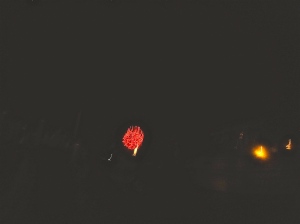

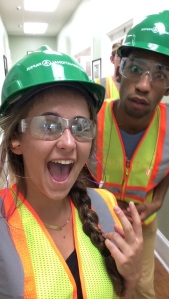







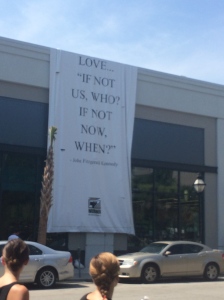



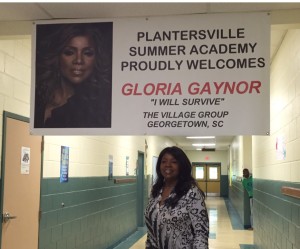

 able to fly the planes as well, we couldn’t wipe the excitement from our faces. Each BN walked out of the plane with an inextinguishable smile painted on. One BN was so excited that she even wanted to purchase a personal plane.
able to fly the planes as well, we couldn’t wipe the excitement from our faces. Each BN walked out of the plane with an inextinguishable smile painted on. One BN was so excited that she even wanted to purchase a personal plane.

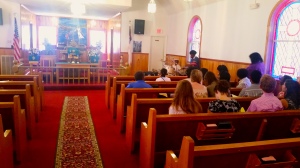
 -Shubham
-Shubham